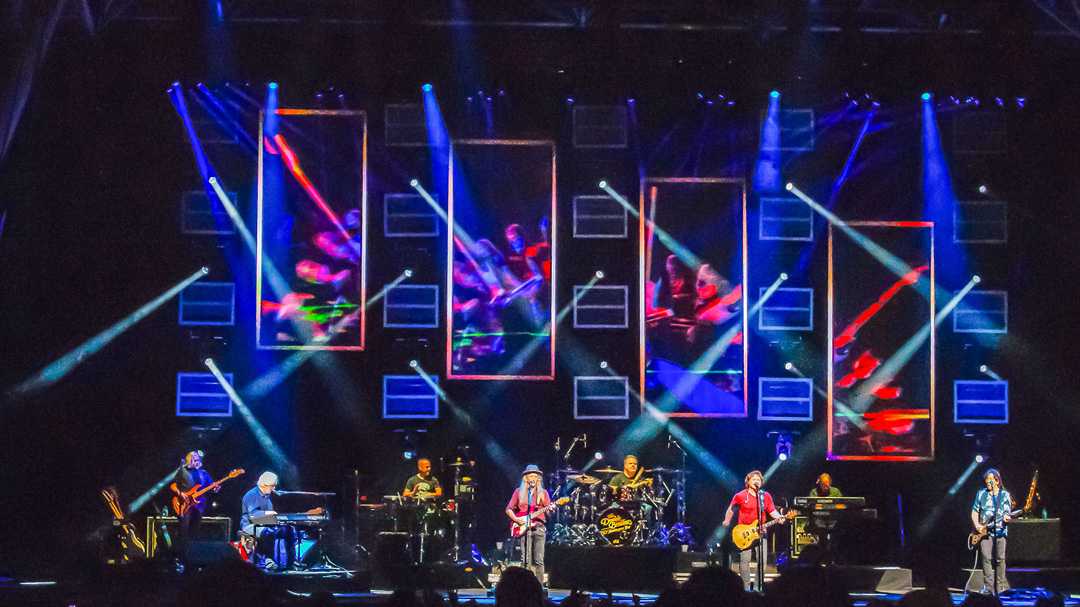Spikies light Doobie Brothers anniversary tour
- Details

The tour was originally scheduled for 2020, was halted amid the initial pandemic shutdowns, and is now back on the road across North America.
The lighting design includes 92 Robe Spikie moving lights which play a key role in shaping the show’s aesthetic, which takes inspiration from a collage of classic stage lighting design gems emanating from the 1970s and 1980s, when the industry we know today was in its infancy.
Stylistically reminiscent of that era, there are no cameras or IMAG video elements. However, unlike then, the lighting rig encapsulating the foot-tapping Doobie Brothers’ music and harmonies that spanned five glorious decades is completely LED.
Seth and Nate are - by their own description - “walking encyclopedias” on the history of concert touring lighting, so they enthusiastically developed this concept, noting that any eagle-eyed lighting nerds will spot essences of Marc Brickman, Steve Cohen, Peter Morse, Jeff Ravitz, Marilyn Lowey, Alan Owen, Howard Ungerleider and so many more of those early-stage lighting design influencers in this show.
“We wanted to pay homage to all that amazing history with a design reflecting the era of the band, and without it feeling dated,” stated Seth.
Woven into the show’s lighting cueing - overseen on the road by lighting director Steve Owens, himself a long-term Doobie Brothers LD - are a pack of “hat tips and homages” to those ‘greats’ of our own industry from that pioneering era.
“Spikie really did everything we needed with a few gags up its sleeve to make for some interesting and special moments” said Nathan. “The versatility of the Spikie allowed us to do everything we needed.”
The fixtures - all supplied by lighting vendor Solotech - are configured to resemble a 1970s style PAR can rig, clumped together in fours and sixes to give the retro pre-rigged truss section appearance, but in a very organised way. This was orchestrated by crew chief Dave Carr who imagineered an ingenious pipe assembly allowing the fixtures to hang in exactly the way Seth and Nathan envisioned.
Projected video - also part of the Darkroom Creative design concept - is used as a scenic enhancement, with landmark album cover graphics and other archival artwork reimagined as new visual animations and projected onto rows of constructivist scenic panels across the stage.













